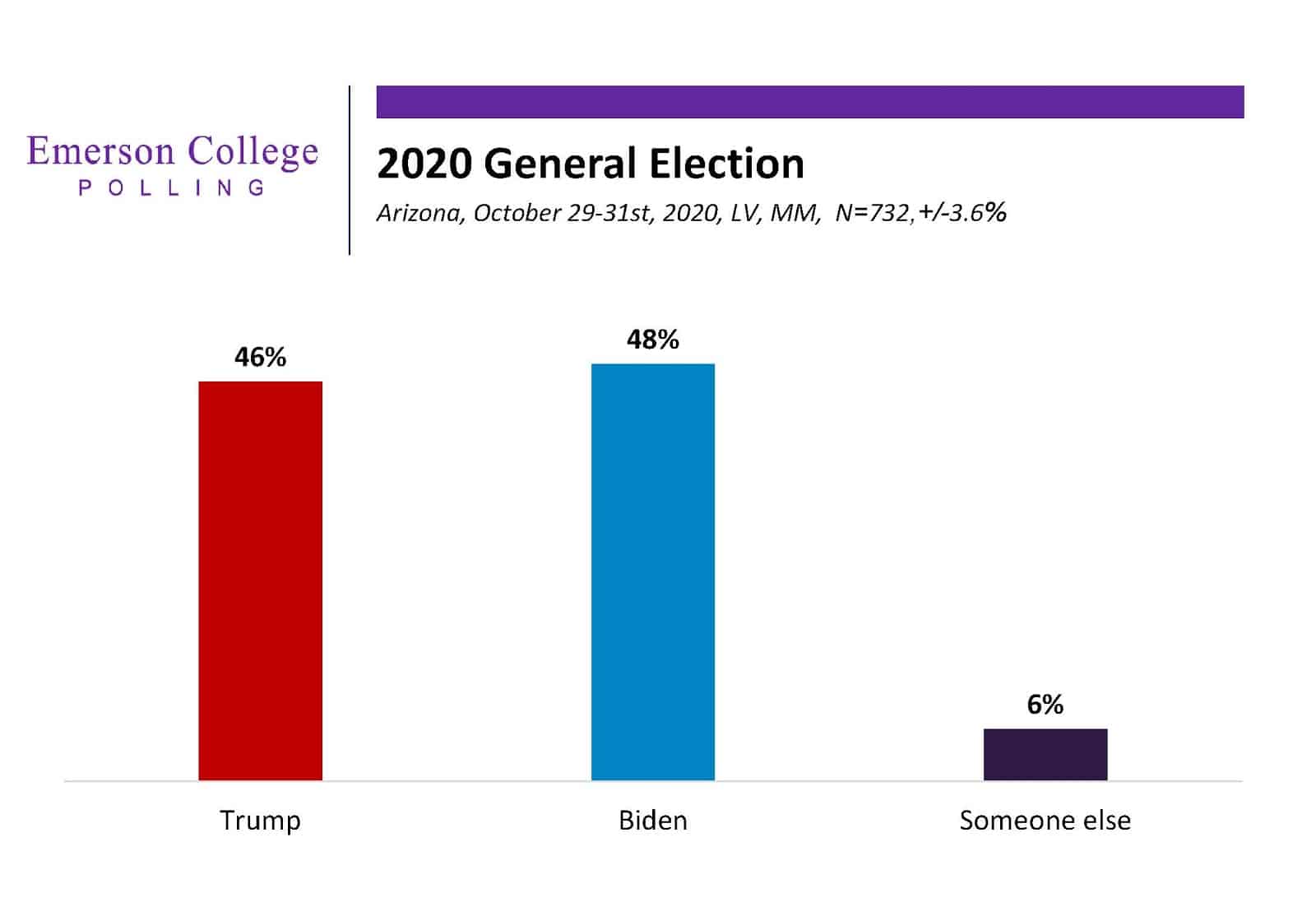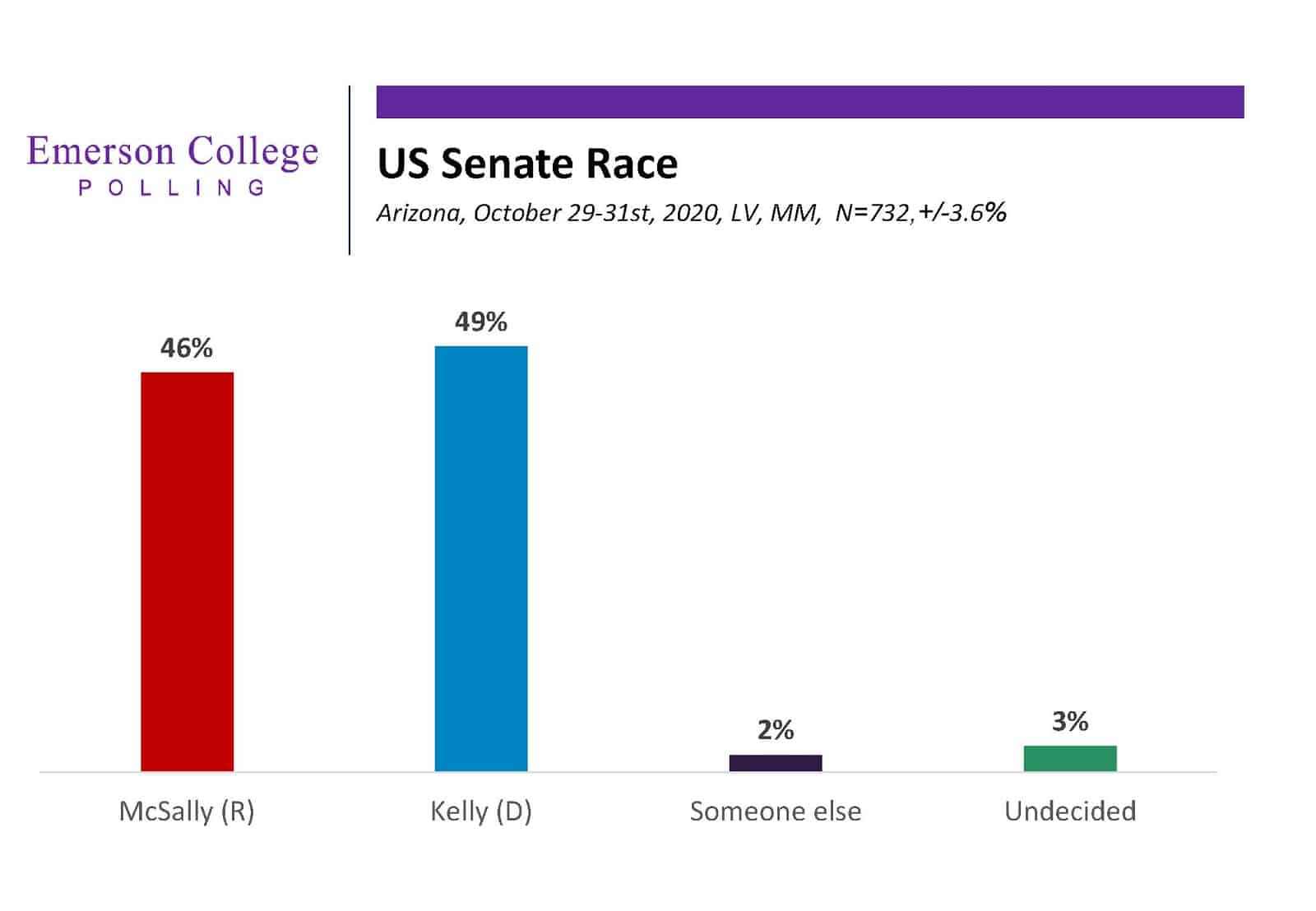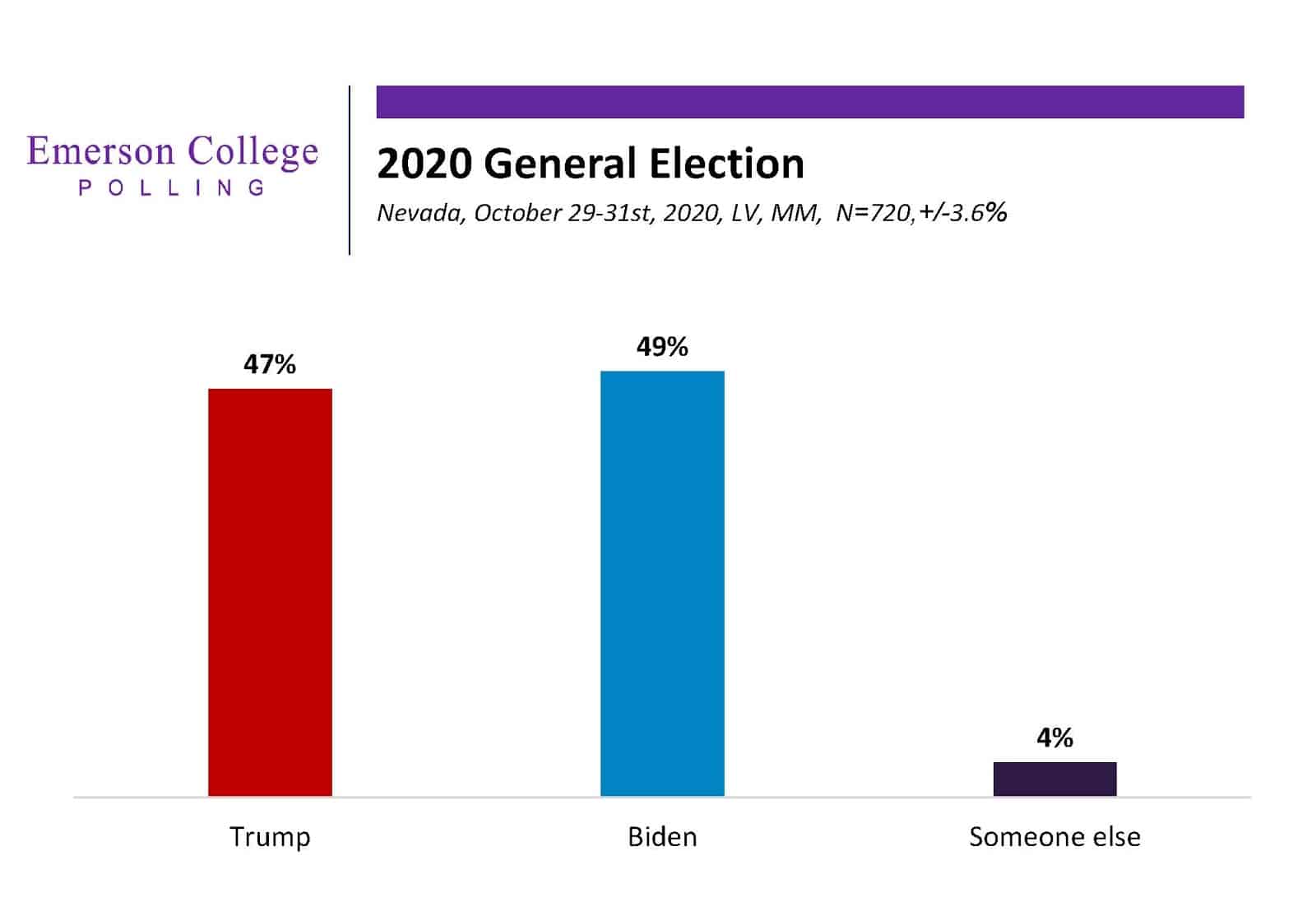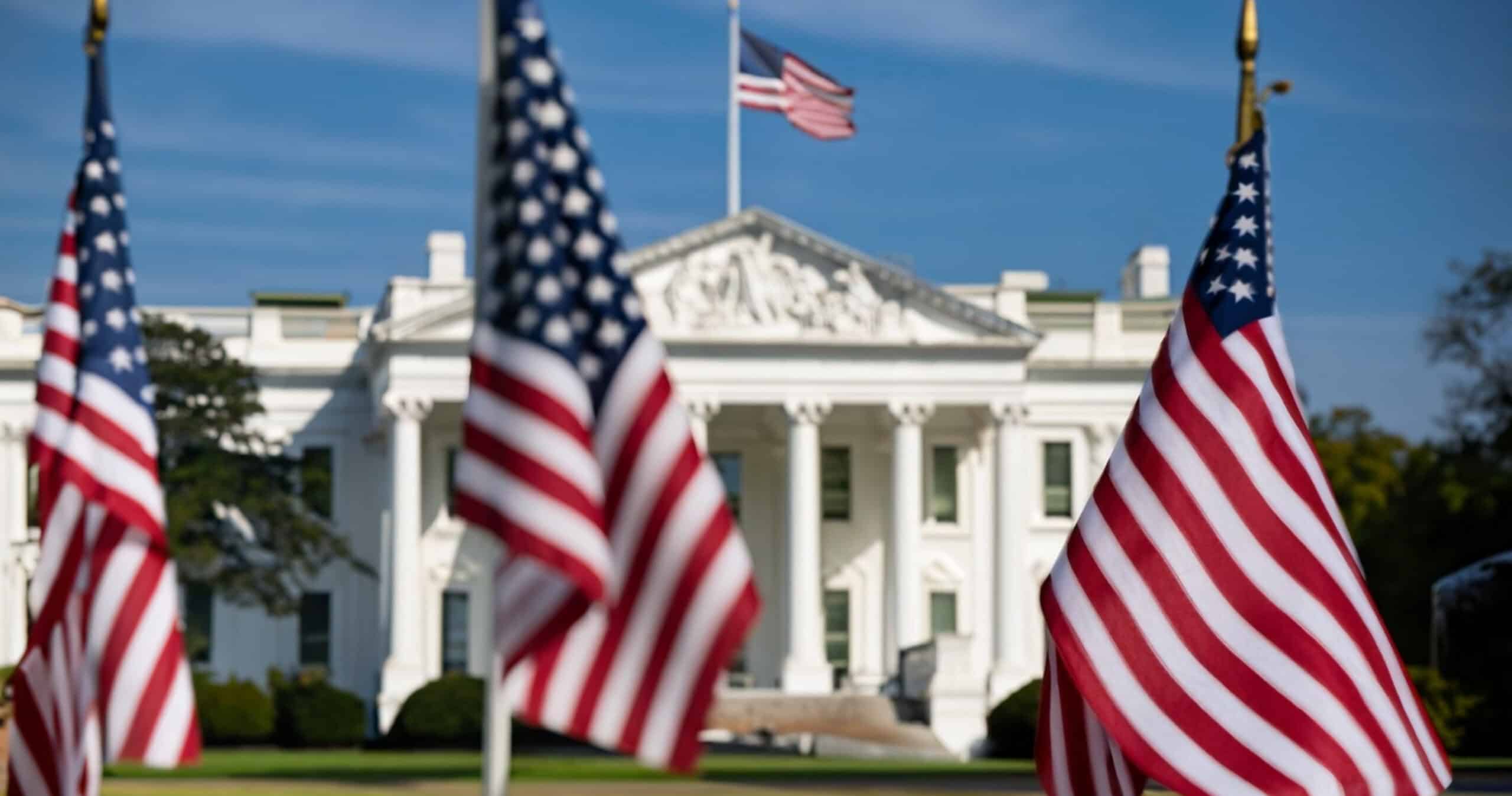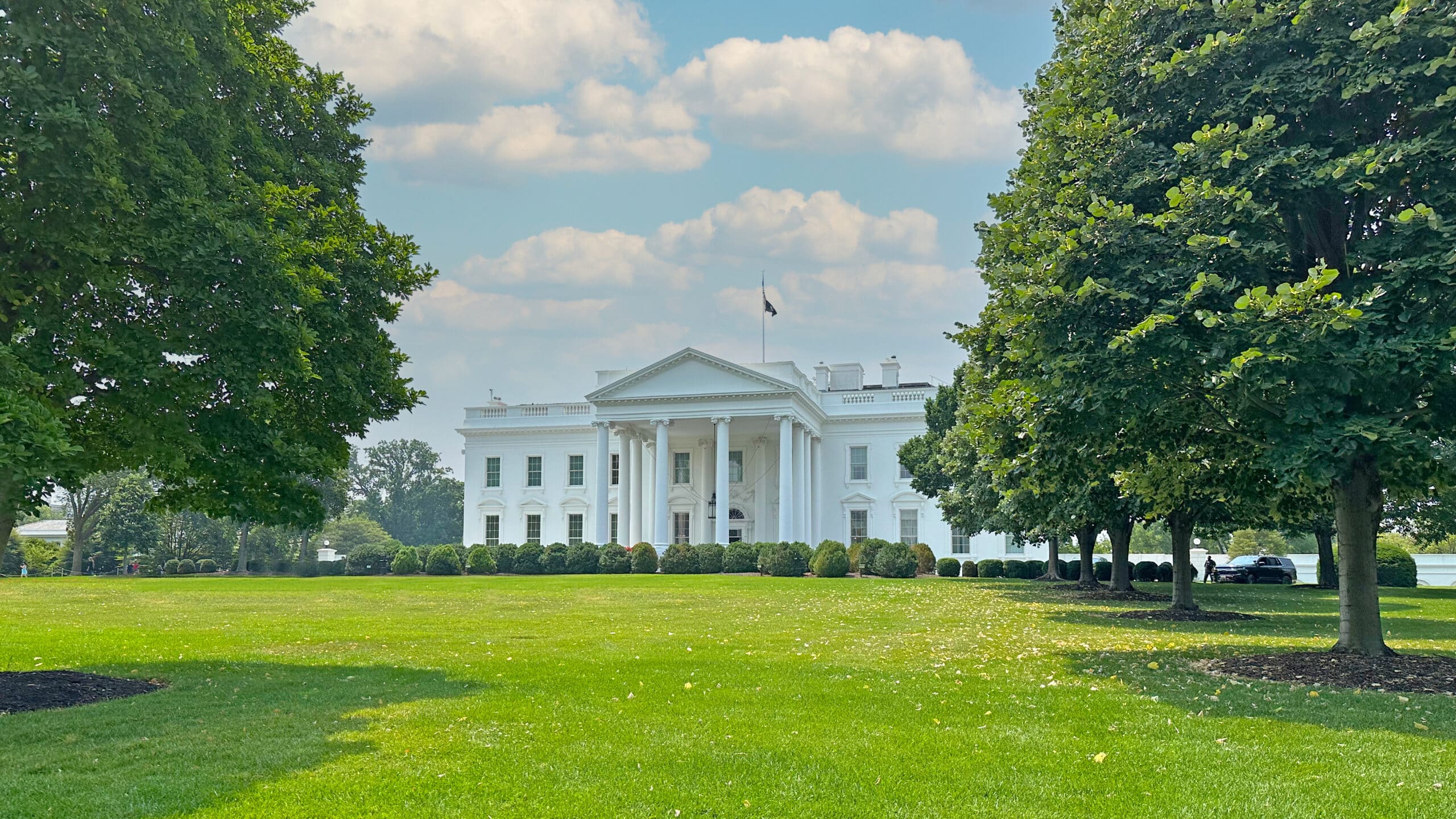The final Emerson College poll before the November 3rd election in Arizona finds the former Vice President Joe Biden leading President Donald Trump 48% to 46%. Six-percent (6%) of voters plan to vote for someone else and no voters reported being undecided.
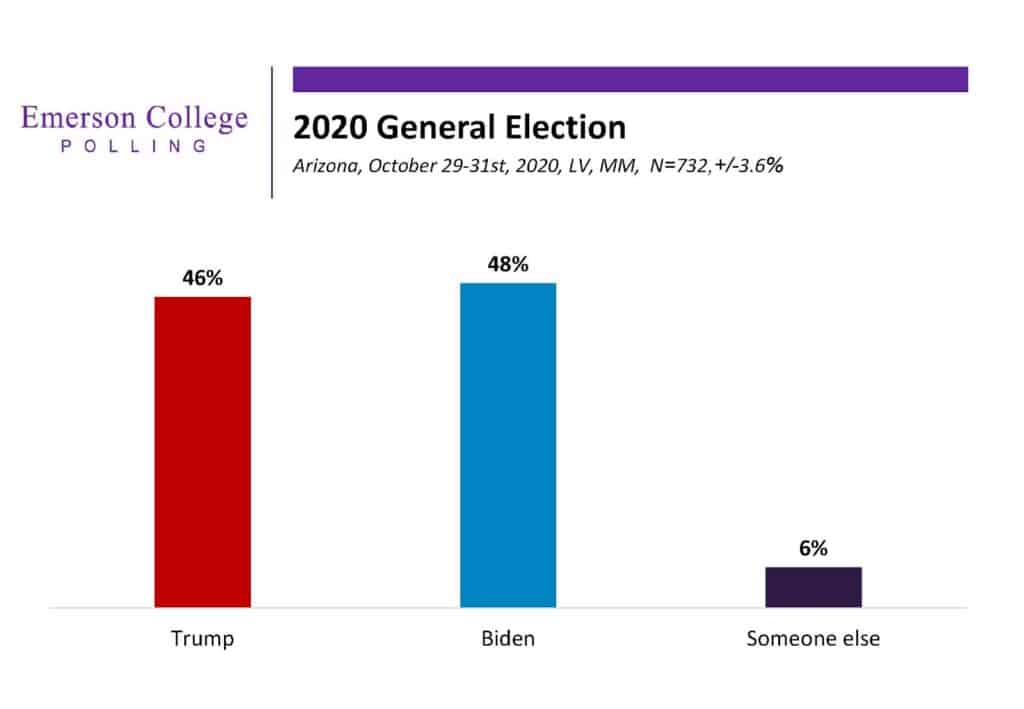
Independent voters are breaking for Biden 57% to 30%. Suburban Arizona voters are split evenly between Trump and Biden, both at 49%. Urban voters break for Biden 52% to 41% while Trump leads among rural voters 48% to 35%. Trump leads among white voters 51% to 45% while Biden leads Hispanic voters 57% to 30% and Black voters 64% to 34%.
In the US Senate race, Democrat Mark Kelly leads incumbent Senator Martha McSally 49% to 46%. Three-percent (3%) of voters were undecided and two percent (2%) plan to vote for someone else.

The majority (51%) of Arizona voters disapprove of the job Donald Trump is doing as president while 46% approve of the job he is doing.
Voters were asked how much of a public health threat they think coronavirus is and a plurality (48%) think it is a major threat while 30% say it is a moderate threat, 15% think it is a minor threat and 7% think it is no threat at all. The majority (79%) of those voting for Biden think it is a major threat while the plurality (44%) of those voting for Trump thinks it is a moderate threat.
The plurality (37%) of Arizona voters say the economy is the most important issue in deciding their vote for president, followed COVID-19 response with 18%, healthcare with 14%, social justice with 8%, climate change with 8%, and the supreme court with 3%.
Among Trump voters, the majority (69%) say the economy is the most important issue while the plurality (34%) of Biden voters say COVID-19 response is the most important issue in deciding their vote for president.
Caller ID
The Arizona Emerson College poll was conducted October 29-31, 2020. The sample consisted of likely Democratic, Republican, and Independent voters, n=732, with a Credibility Interval (CI) similar to a poll’s margin of error (MOE) of +/- 3.6 percentage points. The data sets were weighted by gender, age, education, party affiliation, race and region based on 2016 voter turnout modeling. It is important to remember that subsets based on gender, age, party breakdown, ethnicity, and region carry with them higher margins of error, as the sample size is reduced. Data was collected using an Interactive Voice Response (IVR) system of landlines (n=353), SMS-to-web texts (n=184), and an online panel provided by MTurk (n=196).
Nevada 2020
The final Emerson College poll before the November 3rd election in Nevada finds the former Vice President Joe Biden leading President Donald Trump 49% to 47%. 4% of voters plan to vote for someone else. No voters reported being undecided.

Biden is leading independent voters in Nevada 52% to 39%. Biden has a lead among urban voters 56% to 39%. Trump has a lead among rural voters 61% to 31% and suburban Nevada voters 51% to 48%.
The majority (50%) of Nevada voters disapprove of the job Donald Trump is doing as president while 47% approve of the job he is doing.
Voters were asked how much of a public health threat they think coronavirus is and the majority (50%) think it is a major threat while 24% say it is a moderate threat, 20% think it is a minor threat and 6% think it is no threat at all. The majority (84%) of those voting for Biden think it is a major threat while those voting for Trump are split between a moderate threat (38%) and a minor threat (37%).
The plurality (36%) of Nevada voters say the economy is the most important issue in deciding their vote for president, followed by COVID-19 response with 21%, healthcare with 12%, social justice with 8%, climate change with 8% and the supreme court with 4%.
Among Trump voters, the majority (72%) say the economy is the most important issue.
Biden voters are more split regarding their most important issue between COVID-19 response (34%), healthcare (17%), climate change (15%), and social justice (14%)
Caller ID
The Nevada Emerson College poll was conducted October 29-31, 2020. The sample consisted of likely Democratic, Republican, and Independent voters, n=720, with a Credibility Interval (CI) similar to a poll’s margin of error (MOE) of +/- 3.6 percentage points. The data sets were weighted by gender, age, education, party affiliation, race and region based on 2016 voter turnout modeling. It is important to remember that subsets based on gender, age, party breakdown, ethnicity, and region carry with them higher margins of error, as the sample size is reduced. Data was collected using an Interactive Voice Response (IVR) system of landlines (n=444), SMS-to-web texts (n=158), and an online panel provided by MTurk (n=118).




